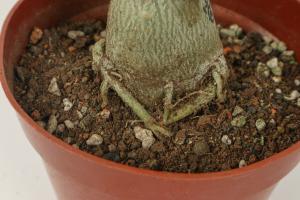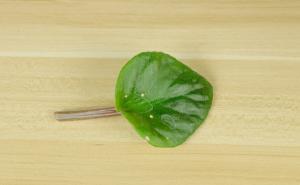Reviving a Dying Snake Plant: A Comprehensive Guide
If you're a plant lover, you know how disheartening it can be to watch your beloved greens wilt and die. Snake plants, known for their hardy nature, are no exception. If you notice your snake plant starting to look lifeless and droopy, don't panic. With a little bit of TLC and some expert care, you can easily bring your snake plant back to life. Here's how:
Step 1: Diagnose the Problem
The first step in reviving a dying snake plant is to figure out what's causing the issue. A droopy or yellowing snake plant can have a variety of causes, including:
Overwatering
Underwatering
Disease or pest infestation
Too much or too little light
Take a close look at your snake plant and try to identify the problem. If the soil is waterlogged and the leaves are mushy, you may be overwatering. If the leaves are dry and brittle, underwatering could be the culprit. If you notice pests or discoloration on the leaves, your snake plant may be suffering from a disease or infestation.
Step 2: Adjust Watering Habits
The most common cause of a dying snake plant is improper watering. To care for a snake plant, you should only water it when the soil is completely dry to the touch. Too much water can lead to root rot and other complications, while too little water can cause the leaves to wilt and turn yellow.
If you suspect overwatering, stop watering your snake plant immediately and allow the soil to dry out completely before resuming watering. If underwatering is the problem, start watering your plant more frequently and monitor its progress.
Step 3: Check for Pests and Diseases
If your snake plant is suffering from pests or diseases, it's important to take action quickly to prevent further damage. Pests like spider mites and mealybugs can be treated with insecticidal soap, while fungal infections can be treated with fungicide. Be sure to follow the instructions on the label, and isolate your snake plant to prevent the infestation or infection from spreading to other plants.
Step 4: Adjust Lighting Conditions
Snake plants prefer bright, indirect light, but direct sunlight can burn their leaves. If your snake plant is getting too much or too little light, it can cause the leaves to wilt and turn yellow. Move your plant to a brighter or shadier location as needed.
Step 5: Give Your Plant a Boost
If your snake plant is still struggling after these adjustments, it may need a little extra care to get back on track. Try one or more of the following treatments:
Fertilize: Use a balanced fertilizer once a month during the growing season to give your snake plant the nutrients it needs to thrive.
Repot: If your snake plant is root-bound, repot it into a larger container with fresh soil. Be sure to wait until the soil is completely dry before repotting.
Trim: If your snake plant has yellow or damaged leaves, carefully trim them away with a pair of clean scissors. This will redirect the plant's energy to healthy foliage.
With a little bit of patience and care, you can easily revive a dying snake plant. By identifying the problem, adjusting your watering and lighting habits, and giving your plant a little extra TLC, your snake plant can thrive once again.

 how many times do yo...
how many times do yo... how many planted tre...
how many planted tre... how many pine trees ...
how many pine trees ... how many pecan trees...
how many pecan trees... how many plants comp...
how many plants comp... how many plants can ...
how many plants can ... how many plants and ...
how many plants and ... how many pepper plan...
how many pepper plan...































